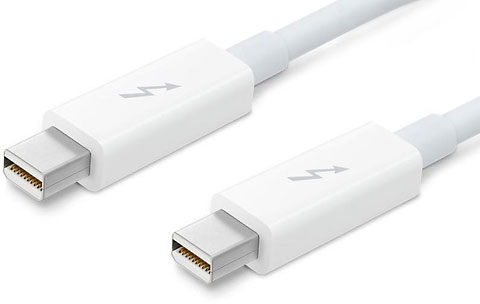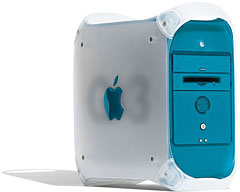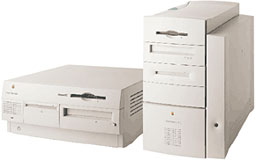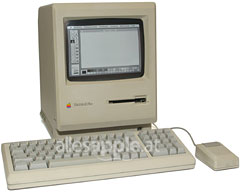After reading Thunderbolt vs. USB, HDMI, PCIe Cable: How Does It Compare? on Cnet, it looks like we’re going to have yet another port war in the PC world.
Here’s a brief overview of the four technologies covered in this article:
Thunderbolt
 Thunderbolt is fast – so fast at 10 Gbps that it has to be built onto the system board. No, you can’t buy a Thunderbolt PCIe card. Thunderbolt supports both PCIe and video. It’s not an inexpensive technology, and while every Mac introduced since 2011 has it, hardly anything else does, although it looks like Acer is embracing it.
Thunderbolt is fast – so fast at 10 Gbps that it has to be built onto the system board. No, you can’t buy a Thunderbolt PCIe card. Thunderbolt supports both PCIe and video. It’s not an inexpensive technology, and while every Mac introduced since 2011 has it, hardly anything else does, although it looks like Acer is embracing it.
USB 3.0
 USB is ubiquitous and cheap to implement. It’s been around since 1996, although it didn’t really go anywhere until the first iMac shipped in August 1998. USB 1.1 tops out at 12 Mbps, which is fine for keyboards and mice, decent for 802.11b and g WiFi cards, adequate for printers and scanners and slow-burning CD-RW optical drives, and horribly slow for hard drives. USB 2.0 is 40x as fast with 480 Mbps of bandwidth, which makes it great for almost everything.
USB is ubiquitous and cheap to implement. It’s been around since 1996, although it didn’t really go anywhere until the first iMac shipped in August 1998. USB 1.1 tops out at 12 Mbps, which is fine for keyboards and mice, decent for 802.11b and g WiFi cards, adequate for printers and scanners and slow-burning CD-RW optical drives, and horribly slow for hard drives. USB 2.0 is 40x as fast with 480 Mbps of bandwidth, which makes it great for almost everything.
USB 3.0 improves on that with over 10x the bandwidth of 2.0 plus bidirectional support, so your PC can both send and receive data at up to 5 Gbps at the same time. That’s potentially half as fast as Thunderbolt at a much lower cost. Best of all, it’s backward compatible, so you can plug USB 3.0 devices into USB 2.0 ports and vice versa.
HDMI
HDMI has been used to connect flat screen TVs to DVD and Blu-ray players, DVRs, computers, and more since 2003. It is specifically designed to support high definition displays and audio, so a single HDMI cable can send video and sound to your TV.
HDMI is becoming a popular monitor port on PCs, and all the new MacBook Pro models have it. It may eventually displace those VGA ports that every PC notebook seems to include to support video projectors.
PCIe Cable
Intel, which invented Thunderbolt, says it will eventually reach 100 Gbps. USB 4 isn’t even in the proposal stage. And HDMI is primarily used for displays. PCI Express Cable (PCIe Cable for short) basically takes the PCI Express bus and puts it on a cable, something Thunderbolt already does – but much faster than the current Thunderbolt speed.
PCIe Cable will launch with 32 Gbps bandwidth and jump to 64 Gbps when PCI Express 4.0 becomes available. HP is a big fan of PCIe Cable.
In terms of cost, USB 3.0 and HDMI are inexpensive, while Thunderbolt is not. PCIe Cable will probably be less costly than Thunderbolt.
In terms of speed, PCIe Cable will be the champion when it ships, Thunderbolt is the winner today, and USB 3.0 is a solid second at half its speed. HDMI isn’t used to connect drives, just monitors, so its speed is not an issue here.
Older Technologies
SATA
Almost every hard drive, SSD, and internal optical drive is connected to SATA these days. The original SATA specification had 1.5 Gbps bandwidth, SATA Revision 2 doubled that to 3.0 Gbps, and Revision 3 doubled that to 6 Gbps. That’s perfect for even the fastest hard drives, more than enough for Blu-ray, but it becomes a bottleneck for SSD. There is no Revision 4 in the works, so 6 Gbps is probably the end of the line for SATA. [Since this article was first published in 2012, SATA Revision 3.2 (a.k.a. SATA Express) proposes 16 Gbps throughput and unites SATA and PCIe technologies in a single standard.]
In terms of speed, SATA Rev. 3 is slower than Thunderbolt and a bit faster than USB 3.0.
Ultra ATA
Before SATA, there was ATA (also known as IDE, Ultra ATA, and Parallel ATA or PATA). This is the bus technology Apple used up through the PowerPC G4 era, moving to SATA with its G5 models. Ultra ATA topped out at 133 MBps (just over 1.0 Gbps), about two-thirds the bandwidth of the first SATA version.
FireWire 400 and 800
 Apple introduced FireWire in 1999 with the Blue & White Power Mac G3. The original standard had 400 Mbps bandwidth, and due to a “smarter” data bus, it tends to outperform 480 Mbps USB 2.0. This was fast in the days of 33 MBps (264 Mbps) ATA and not much of a bottleneck for the fastest 66 MBps (528 Mbps) drives, but looking forward, Apple introduced twice-as-fast FireWire 800, which was a perfect match for the 100 MBps (800 Mbps) speed of the second-to-last Parallel ATA standard. Only the fastest UltraATA 133 drives can saturate the FireWire 800 bus.
Apple introduced FireWire in 1999 with the Blue & White Power Mac G3. The original standard had 400 Mbps bandwidth, and due to a “smarter” data bus, it tends to outperform 480 Mbps USB 2.0. This was fast in the days of 33 MBps (264 Mbps) ATA and not much of a bottleneck for the fastest 66 MBps (528 Mbps) drives, but looking forward, Apple introduced twice-as-fast FireWire 800, which was a perfect match for the 100 MBps (800 Mbps) speed of the second-to-last Parallel ATA standard. Only the fastest UltraATA 133 drives can saturate the FireWire 800 bus.
The slowest SATA bus has nearly twice the bandwidth of FireWire 800, and later SATA revisions have made FireWire 800 practically obsolete for power users.
USB 2.0
USB 2.0 was state of the art in the Mac world until this past Monday, when Apple introduced a new range of MacBook computers, each equipped with USB 3.0. Although officially rated at 480 Mbps, in the real world USB 2.0 tends to be slower than FireWire 400, which is rated at 400 Mbps (one-third faster read speeds according to Tom’s Hardware).
SCSI
Way back in the mid-1980s, Apple adopted SCSI (Small Computer System Interface) for its hard drives. Compared to the PC drives of the day, SCSI put a lot less burden on the computer’s CPU, leaving it free to do its real work. The initial SCSI implementation on the Mac Plus wasn’t the greatest, but it was a huge step up from using the floppy drive port, as Apple’s first Mac hard drive did.
 SCSI got faster and faster, but the “smart” interface chips made it a more costly technology than IDE/ATA, and in the mid-1990s, Apple began to adopt ATA drives on its consumer models, using them in the Beige Power Mac G3 in 1997 and thus bringing it to the pro user. This was the last Mac with a built-in SCSI port.
SCSI got faster and faster, but the “smart” interface chips made it a more costly technology than IDE/ATA, and in the mid-1990s, Apple began to adopt ATA drives on its consumer models, using them in the Beige Power Mac G3 in 1997 and thus bringing it to the pro user. This was the last Mac with a built-in SCSI port.
By way of comparison, the first SCSI standard had 40 Mbps bandwidth – over 3x as fast as USB 1.1, which helps explain why USB 1.1 was horrid for hard drives. Later Macs moved to Fast SCSI and 80 Mbps bandwidth, and some Macs support 160 Mbps SCSI – a bit faster than the 16.7 MBps (133 Mbps) bandwidth of the first Power Mac G3.
Ever Forward
SCSI made a lot of sense in the day of 8 MHz Macs that also used the CPU to handle graphics. As the Mac moved to more powerful, faster CPUs and dedicated graphics processors, eventually they reached the point where the overhead of ATA became insignificant, so Apple made the move.
When it became clear that USB 1.1 was a huge bottleneck for external hard drives, Apple released its FireWire technology, which also had some of the same smarts as SCSI. Even when USB 2.0 finally arrived, FireWire 400 outperformed it. Apple deliberately dragged its feet on implementing USB 2.0 (ditto for USB 3.0) to focus on establishing its superior, somewhat more expensive FireWire technology.
Today’s Macs use cutting-edge SATA Revision 3 technology, and for SSD-based Macs, that’s a bottleneck. Apple is big enough to push through a faster SATA bus if it wants to, and its Thunderbolt technology can absolutely unleash the potential of SSDs. Adding USB 3.0 is icing on the cake, giving those who don’t need the ultimate in throughput something a whole lot faster than USB 2.0 for their external hard drives, Blu-ray drives, and SSDs.
Update: Since this article was published in June 2012, USB 3.1 has been announced at 10 Gbps – the same as Thunderbolt. And not to be outdone, Thunderbolt 2 upped bandwidth to 20 Gbps, so it’s still twice the bandwidth of the fastest UBS protocol.
Keyword: #thunderbolt
Short link: http://goo.gl/4FeCzA
searchword: thunderboltvs


